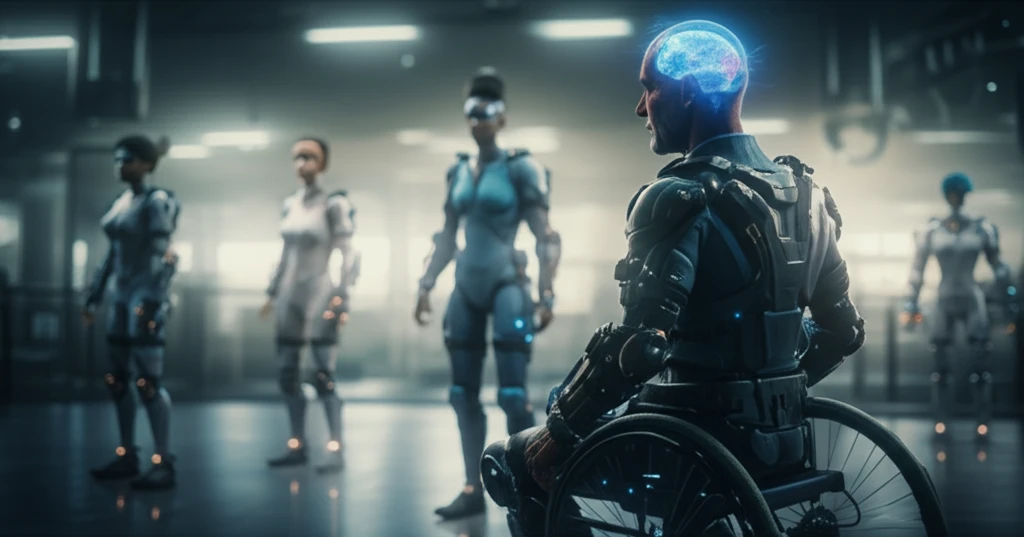
Reclaim Your Life: How Brain-Computer Interfaces and Exoskeletons are Revolutionizing Stroke Recovery
"Discover the groundbreaking approach of combining brain-computer interfaces (BCIs) with exoskeletons to restore motor function and improve resocialization for stroke patients."
Stroke is a leading cause of disability worldwide, often resulting in impaired motor function that significantly impacts a person's independence and quality of life. The aftermath of a stroke can be a challenging journey, with many individuals facing difficulties in performing everyday tasks and reintegrating into social life.
Traditional rehabilitation methods play a vital role in stroke recovery, but innovative technologies are emerging that offer new possibilities for restoring lost motor skills. Among these advancements, the combination of brain-computer interfaces (BCIs) and exoskeletons holds tremendous promise.
Brain-computer interfaces (BCIs) allow individuals to control external devices with their brain activity, while exoskeletons provide support and assistance for movement. When combined, these technologies create a powerful rehabilitation tool that can potentially enhance motor recovery and improve resocialization for stroke patients.
BCI and Exoskeleton: A Powerful Partnership for Stroke Rehabilitation

The concept behind BCI-exoskeleton rehabilitation is rooted in neuroplasticity, the brain's ability to reorganize itself by forming new neural connections. By repeatedly attempting to move, even if the body is unable to do so, the brain can strengthen existing pathways and create new ones. The BCI detects these attempts and translates them into commands that control the exoskeleton, providing assistance and feedback to the patient.
- Improved Motor Function: All patients showed a tendency to improvement in hand movements. Repeat treatment course was effective and produced rapid attainment of the previous level of movement function, along with further improvement.
- Enhanced Muscle Strength: A significant increase in capacity was seen in the patients using the modified Rankin scale, along with an increase in muscle strength.
- Positive Impact on Mental Domain: All patients showed significant improvements in work efficiency after each course of procedures and after repeat treatment cycles as compared with the first.
- Improved Imagery Skills: Patients easily recovered the acquired imagery skill on repeat hospitalization and repeat training improved measures of recognition of patients' mental state associated with motor imagery by the BCI system.
The Future of Stroke Rehabilitation: Hope for a Brighter Tomorrow
The combination of brain-computer interfaces and exoskeletons represents a significant advancement in stroke rehabilitation. While further research is needed to optimize treatment protocols and identify ideal candidates, these technologies offer renewed hope for stroke survivors seeking to regain lost motor skills, improve their quality of life, and achieve greater independence. With ongoing innovation and dedication, the future of stroke rehabilitation is looking brighter than ever before.
